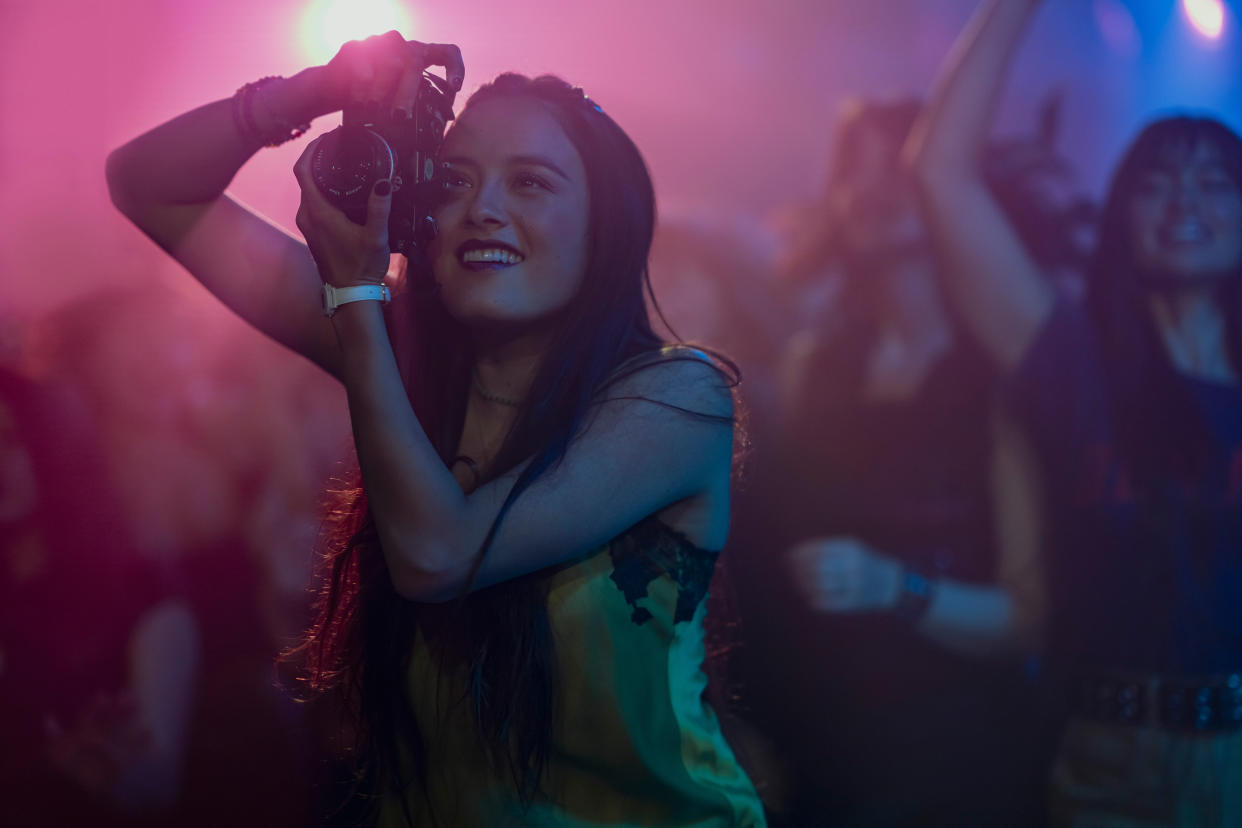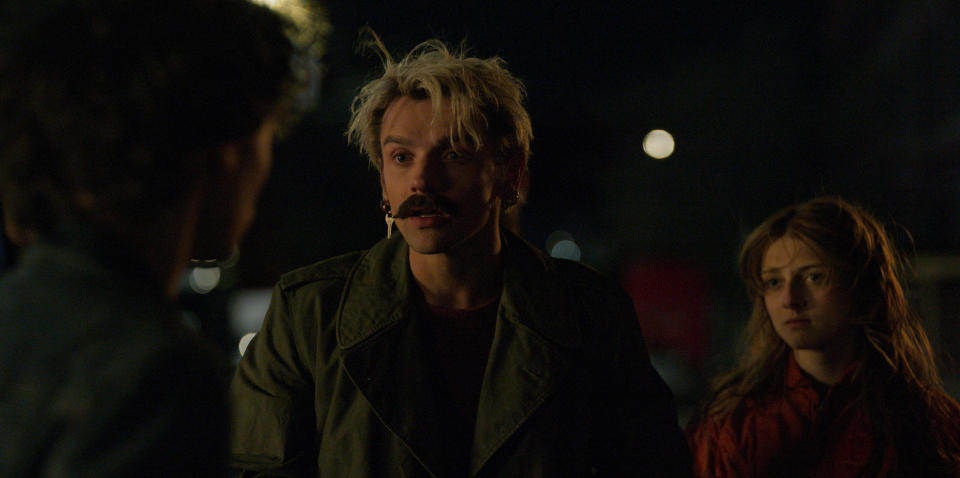From Anthems to ‘Dumb Dance Anarchy’: Recreating 2003’s Indie Music Scene for ‘City on Fire’

- Oops!Something went wrong.Please try again later.
In preparing for his music supervisor work on Apple TV+’s “City on Fire,” Jonathan Leahy began with what all good pregames began circa 2003: He opened up his CD binders.
“I’m a bit of a hoarder of books and recorded media, and I’ve looked at those Case Logic binders many times,” Leahy told IndieWire. “They’re big, they’re heavy, they’re bulky — maybe it’s time to get rid of them? But I held onto them, and this project began with the fully analog, real-world version of the iPod shuffle. Perfect example of that was Ambulance LTD, which was such a great never-quite-made-it artist of the era. That’s the very first licensed music you hear in the show, when the Charlie character heads into the record store.”
More from IndieWire
Set in a post-9/11 but pre-2003 blackout New York City, “City on Fire” is ingeniously updated from the 1977 setting of Garth Risk Hallberg’s novel to the early aughts of a Manhattan that replaced The Ramones and CBGB with Yeah Yeah Yeahs and Don Hill’s. And just as Hallberg’s novel put music front and center, so too does Josh Schwartz and Stephanie Savage’s series adaptation, premiering three episodes on Apple TV+ May 12.
Wyatt Olef’s Charlie is our guide into the world of both “City on Fire” and New York City in the summer of 2003. Within moments of meeting him, Charlie is falling, Alice-like, into the indie music scene thanks to the enigmatic Samantha, intimately connected to both the music world and the rarefied world of the Upper East Side — where she is shot at the end of the first episode. But before that, “City on Fire” takes viewers on an immersive rollercoaster through an indie music world that is either suffused with nostalgia or mind-blowing, depending on one’s age.
“People of a certain age have this era stored quite conveniently in their musical memory banks,” Leahy said. “It covers so much, from Fischerspooner to The Strokes to LCD Soundsystem to TV on the Radio, Interpol.” And while that range provides a wide selection for Leahy to bring to the scenes, it also created a daunting challenge: The creation of the fictional band at the center of “City on Fire.”

Introduced in performance at Don Hill’s in the first episode, Ex Nihilo has been talked up as the stuff of cult worship before they take the stage. But that band and its tunes had to sound realistically part of the era without wearing its influences. “When I talked to songwriters, I made it very explicit that any demo that sounded remotely like it was trying to mimic another artist from the era would be immediately discarded,” Leahy said. “I feel like we got really authentic, personal, quirky recordings or demos that to me don’t feel like it’s a pastiche of anything.”
What Leahy and song producers Jason Hill and Abe Seiferth (who also contributed a pivotal song to the story) were left with was a collection of great tracks, including the title song from Zach Ellis of Dead Tooth, plus more tunes from Bethlehem Steel’s Rebecca Ryskalczyk and Summer Cannibals’ Jessica Boudreaux and Slow Pulp’s Emily Massey. Then Hill and Seiferth brought the sonic prowess to make them sound authentically early aughts, running the gamut from sincere emotion to “dumb dance anarchy.”
That scene introducing the live performance world to Charlie (and to us) sounded very different to Leahy when he initially read the script. But when he saw the first cut of the concert sequence, he rethought everything. “What we see felt more punk than it read on the page,” Leahy said. “When you see the wardrobe and production design and the lighting choices, and you even see Max Milner bring [Ex Nihilo lead singer] Nicky Chaos to life, it became darker and more dangerous than it read, and so it pushed the music in that direction. I wanted to support what we were seeing.”
Part of that scene ended up not being seen at all: An opening band for Ex Nihilo played by real-life band Been Stellar. “We wanted to find a young NYC band that would feel totally natural in this 2003 scene, and we needed them to write brand new material so the songs could live in our fictional timeline,” Leahy said. “Been Stellar wrote and recorded two great new songs with producer Abe Seiferth, and we filmed them playing both at Don Hill’s. Ultimately those scenes didn’t make the final cut, but we do hear the songs in the show, and we included ‘Behind the Eyes’ on the soundtrack.”
The soundtrack (out May 12) also includes a gift from Leahy to fans of the era: A cover of Spacemen 3’s “Lord Can You Hear Me” by Muzz, comprised of Josh Kaufman, Matt Barrick (Jonathan Fire*Eater), and Interpol’s Paul Banks. “I reached out to Matt and said, ‘Any chance you and Muzz would be interested in recording a cover for the finale?'” Leahy said. “And they recorded ‘Lord’ just for us in the finale. And you get to hear Paul Banks’ voice which, for me, Paul Banks’ voice is so iconic and so resonates with the era. I think it’s subtle and under the radar enough that people might scratch their heads and wonder, ‘Is that brand new? Is it a cover I forgot from 20 years ago?'”
Best of IndieWire
Sign up for Indiewire's Newsletter. For the latest news, follow us on Facebook, Twitter, and Instagram.

